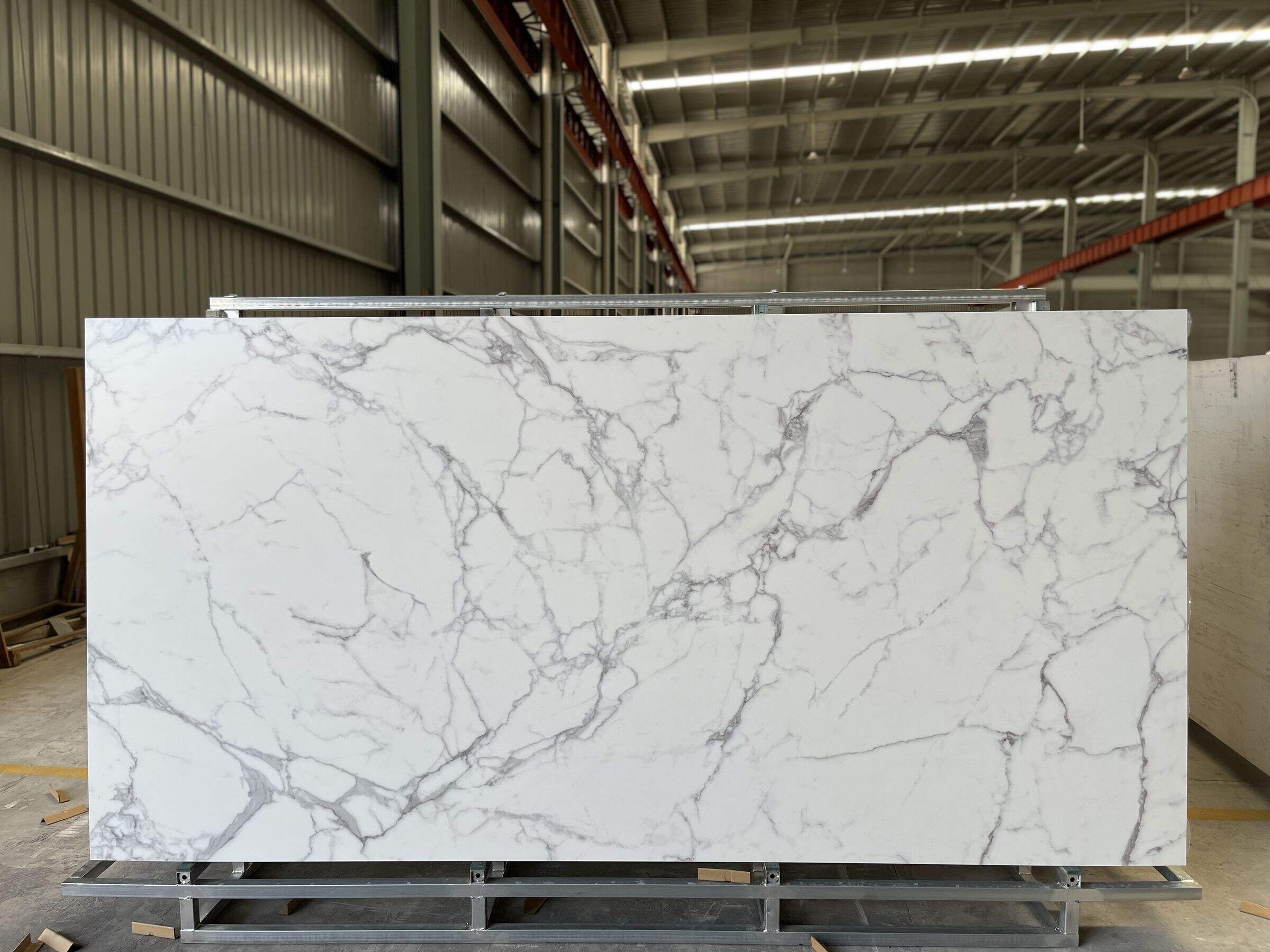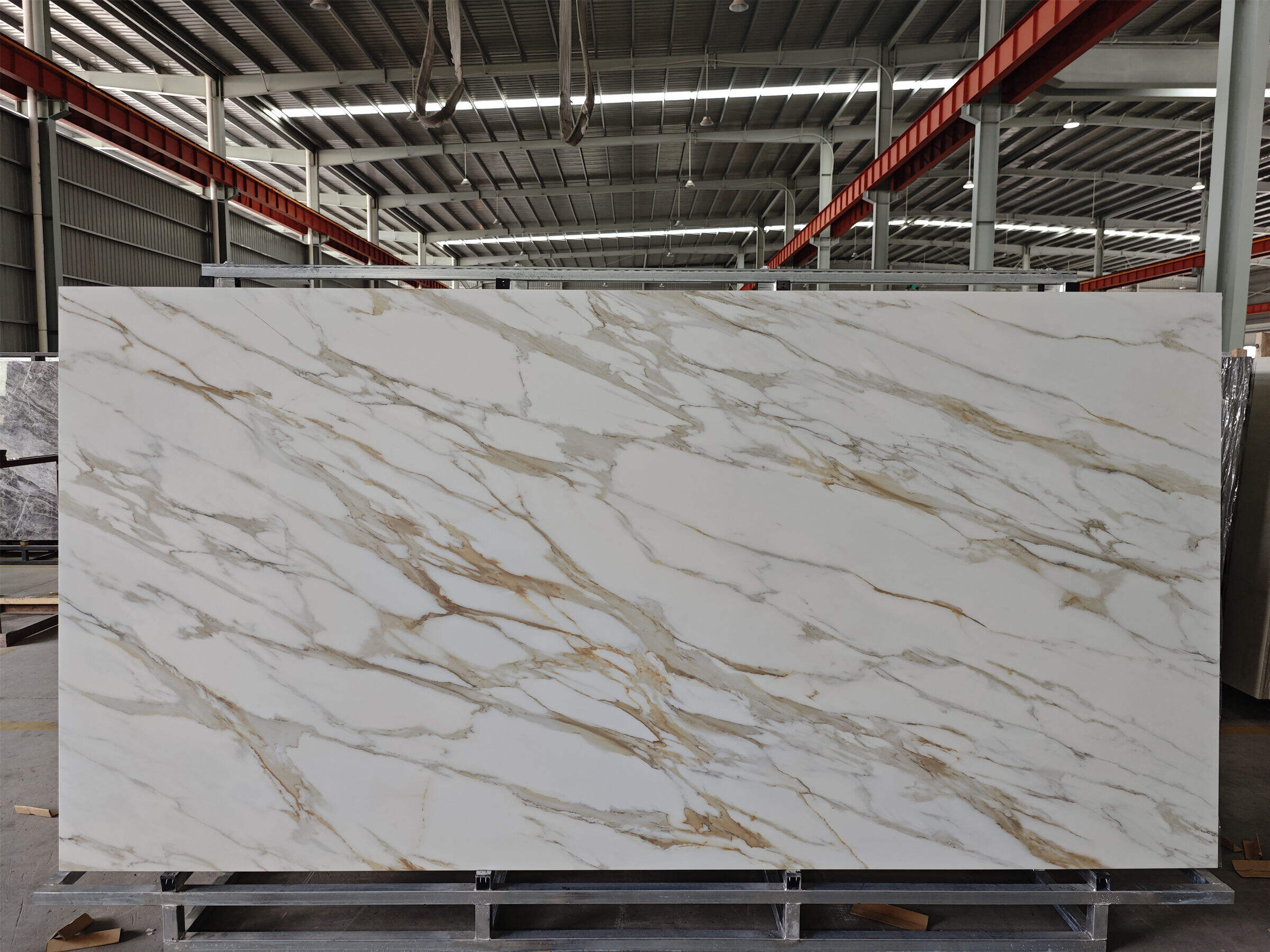How to Choose the Perfect Sintered Stone Slab for Your Home
Sintered stone slabs are a popular choice for modern homes, thanks to their durability, versatility, and sleek look. Made from compressed natural minerals (like quartz, feldspar, and clay) heated to high temperatures, these slabs are strong, non-porous, and available in a wide range of styles. But with so many options, how do you pick the perfect sintered stone slab for your space? Let’s break down the key factors to consider, from size and color to finish and practical needs.
1. Consider the Room and Its Purpose
The first step is to think about where you’ll use the sintered stone slab. Different rooms have different needs, and the slab should match those demands.
- Kitchen countertops: Kitchens need sintered stone slabs that resist heat, stains, and scratches. Look for thick slabs (2–3 cm) with a non-porous surface—they’ll handle hot pans, food spills, and daily chopping. Neutral colors (white, gray, beige) work well here, as they hide stains and match most cabinet styles.
- Bathroom vanities/walls: Bathrooms require water resistance. Sintered stone slabs are ideal since they don’t absorb moisture (no mold or mildew). Choose lighter shades to make small bathrooms feel larger, or darker tones for a luxurious spa-like look. A polished finish adds shine, while a matte finish reduces water spots.
- Living room floors/walls: For floors, pick sintered stone slabs with a textured or anti-slip finish to prevent falls. For feature walls, any finish works—polished slabs add elegance, while textured ones bring warmth. Large slabs (120x240 cm or bigger) create a seamless look, great for open living spaces.
- Outdoor patios: Outdoor sintered stone slabs must resist UV rays, rain, and freezing temperatures. Look for slabs labeled “frost-proof” with a rough finish for grip. Earthy tones (sand, light brown) blend with gardens and outdoor furniture.
Matching the sintered stone slab to the room’s needs ensures it’s both beautiful and functional.
2. Choose the Right Size and Thickness
Sintered stone slabs come in various sizes and thicknesses, affecting both appearance and durability.
- Size: Small slabs (60x60 cm) are easy to install but create more grout lines, which can look busy. Large slabs (160x320 cm or bigger) have fewer seams, making spaces feel larger and more modern. They’re perfect for open areas like kitchens or living rooms. For tight spaces (small bathrooms), medium slabs (80x120 cm) balance style and practicality.
- Thickness: Thicker slabs (3 cm) are stronger and more durable, ideal for countertops, floors, or high-traffic areas. Thinner slabs (1–2 cm) work for walls, backsplashes, or low-use areas—they’re lighter and easier to install.
Consider the space’s size and how the slab will be used when choosing size and thickness.
3. Pick a Finish That Fits Your Style
Sintered stone slabs come in finishes that change their look and feel, from sleek to rustic.
- Polished: Shiny and reflective, polished sintered stone slabs add elegance. They’re great for modern kitchens, bathroom vanities, or feature walls—they reflect light, making rooms brighter. Note: They show fingerprints and water spots more easily, so they need regular wiping.
- Matte: A flat, non-shiny finish. Matte sintered stone slabs are low-maintenance (hides marks) and work well in bathrooms, living rooms, or busy kitchens. They have a soft, understated look that fits both modern and traditional styles.
- Textured: Rough or patterned surfaces (like stone or wood grain). Textured sintered stone slabs add grip (good for floors) and rustic charm. They’re perfect for outdoor patios, country-style kitchens, or accent walls.
- Lapato: A semi-polished finish—shiny but not as reflective as polished. It balances elegance and practicality, hiding some marks while adding subtle shine. Great for countertops or dining room floors.
Choose a finish that matches your decor style and how much maintenance you’re willing to do.

4. Select Colors and Patterns
Sintered stone slabs mimic natural materials (marble, wood, concrete) or come in solid colors, giving you endless design options.
- Natural looks: Many sintered stone slabs copy marble (with veining), granite (speckled), or wood (grain patterns). These add warmth and texture without the flaws of real natural stone (like porosity). A marble-look slab in white with gray veins is timeless, fitting any kitchen or bathroom.
- Solid colors: Bold hues (black, navy, green) make a statement—use them as accent walls or small countertops. Neutral colors (white, gray, beige) are versatile, matching any decor and hiding dirt. They’re a safe choice for large areas like kitchen countertops.
- Patterns: Geometric designs, subtle speckles, or abstract patterns add personality. Use them sparingly (e.g., a backsplash with a geometric sintered stone slab) to avoid overwhelming the space.
Think about the room’s existing colors (walls, furniture, flooring) when choosing a sintered stone slab—aim for a cohesive look.
5. Check for Quality and Certification
Not all sintered stone slabs are equal. High-quality ones last longer and perform better.
- Certifications: Look for slabs with certifications like ISO 9001 (quality management) or GREENGUARD (low chemical emissions). These ensure the sintered stone slab is safe (no harmful fumes) and well-made.
- Test for density: A good sintered stone slab is dense and non-porous. Drop a few drops of water on the surface—if it beads up (doesn’t soak in), it’s high quality.
- Check for uniformity: Inspect the slab for consistent color and pattern. Avoid slabs with cracks, uneven edges, or visible defects—they’ll look unprofessional and may fail over time.
Buy from reputable brands or suppliers to ensure you get a quality sintered stone slab.
FAQ
How do I clean sintered stone slabs?
Wipe with a soft cloth and mild soap and water. For tough stains, use a non-abrasive cleaner. Avoid harsh chemicals (like oven cleaner) on polished finishes.
Can sintered stone slabs be cut to fit?
Yes, professionals can cut them to size using a wet saw. This allows for custom shapes (e.g., around sinks or outlets).
Are sintered stone slabs expensive?
They cost more than ceramic or laminate but less than high-end marble or quartz. Their durability and low maintenance make them cost-effective long-term.
Do sintered stone slabs fade in sunlight?
No, they’re UV-resistant. Colors stay true even in direct sunlight—great for outdoor use or sunny rooms.
Can I install sintered stone slabs myself?
Small projects (backsplashes) are possible for DIYers with tools. For large slabs (countertops, floors), hire a professional to avoid mistakes (uneven installation, cracks).

